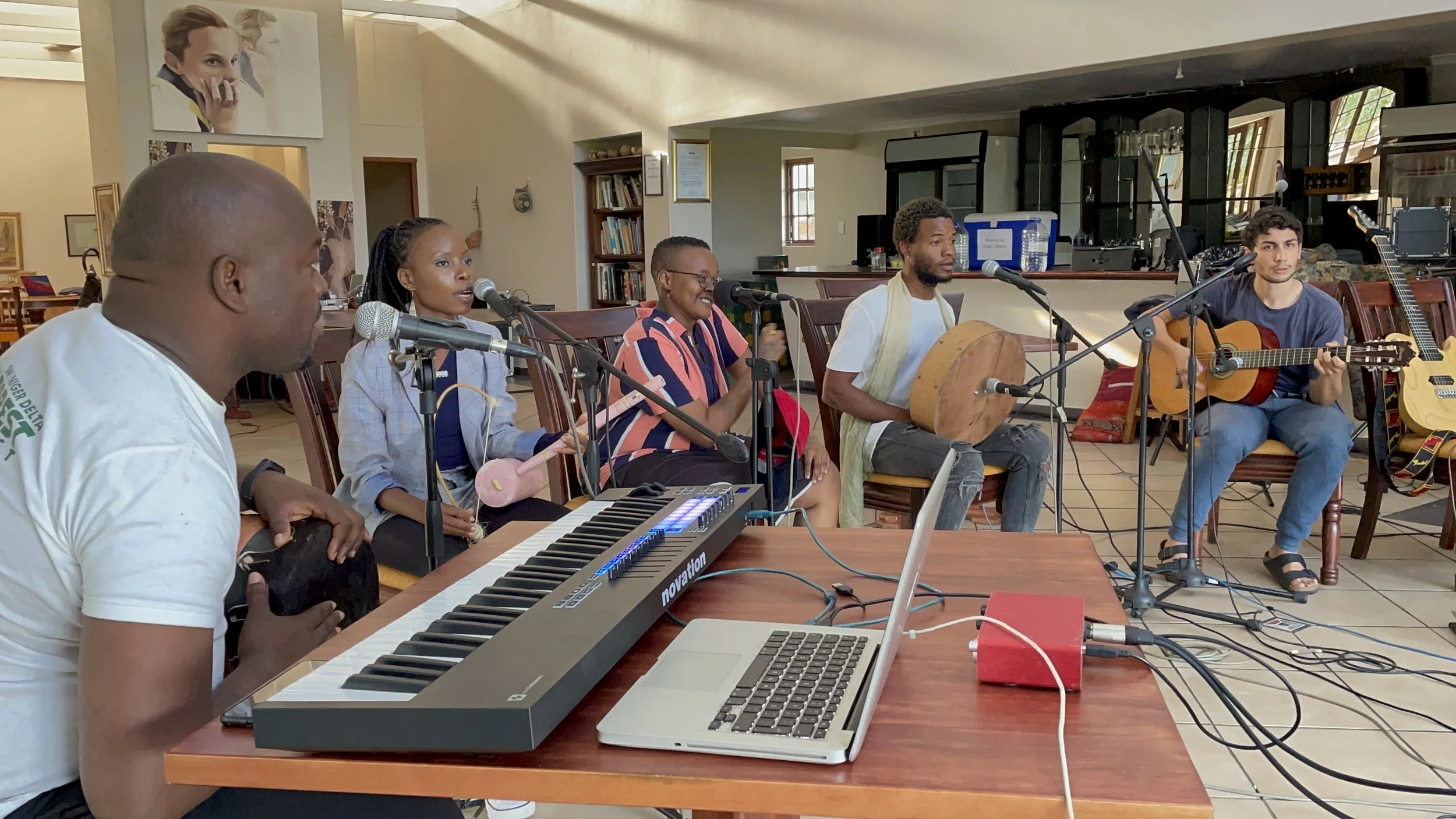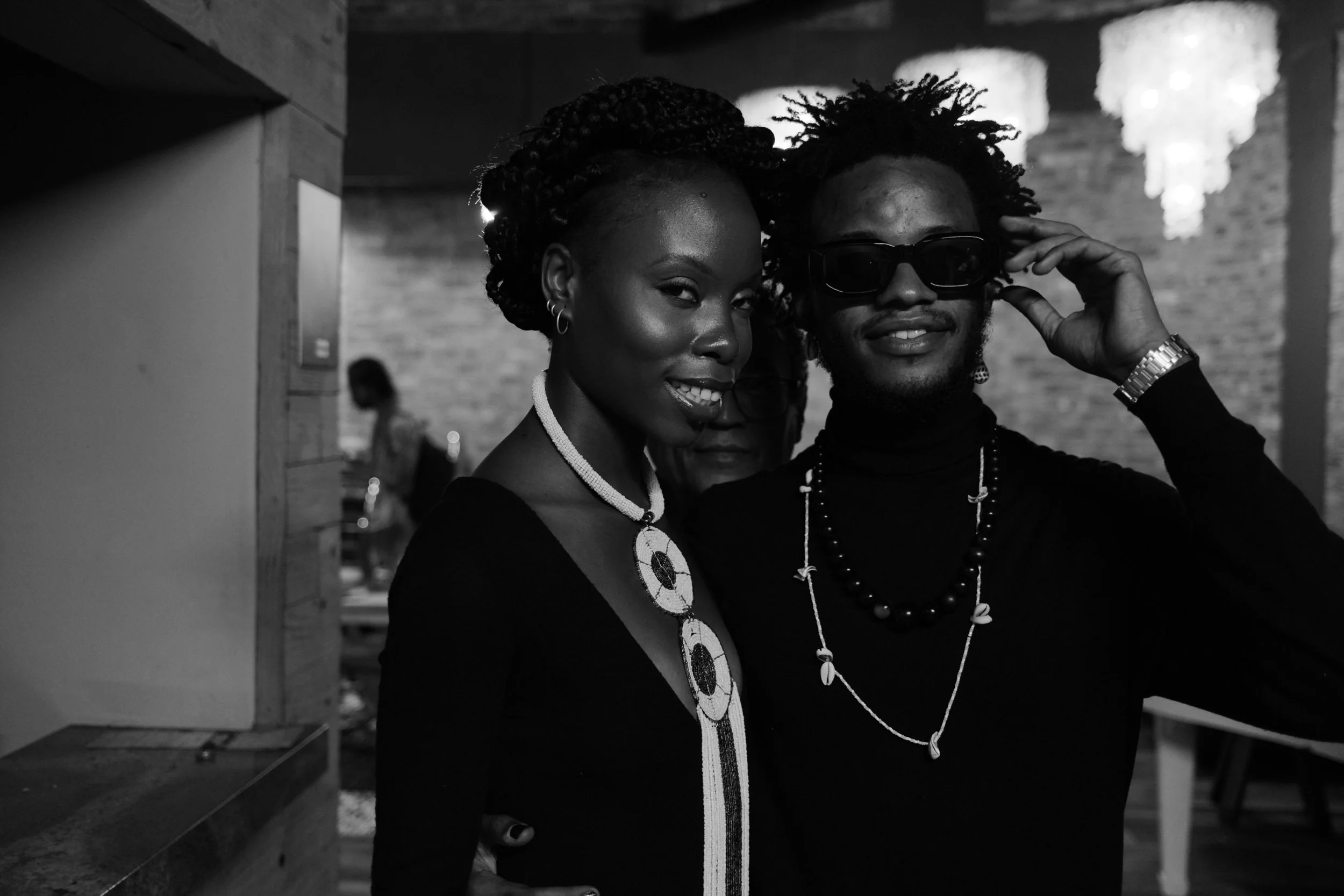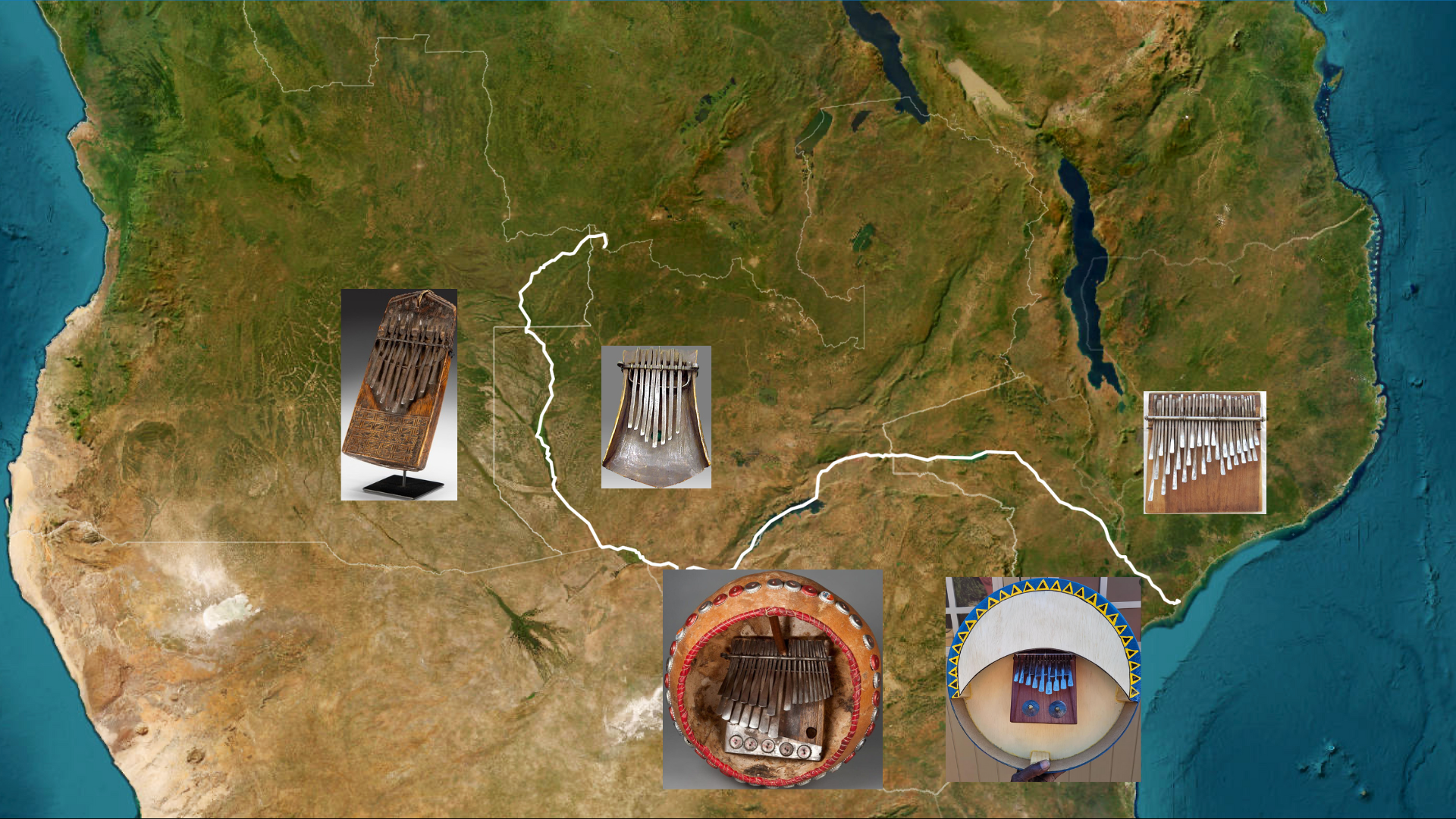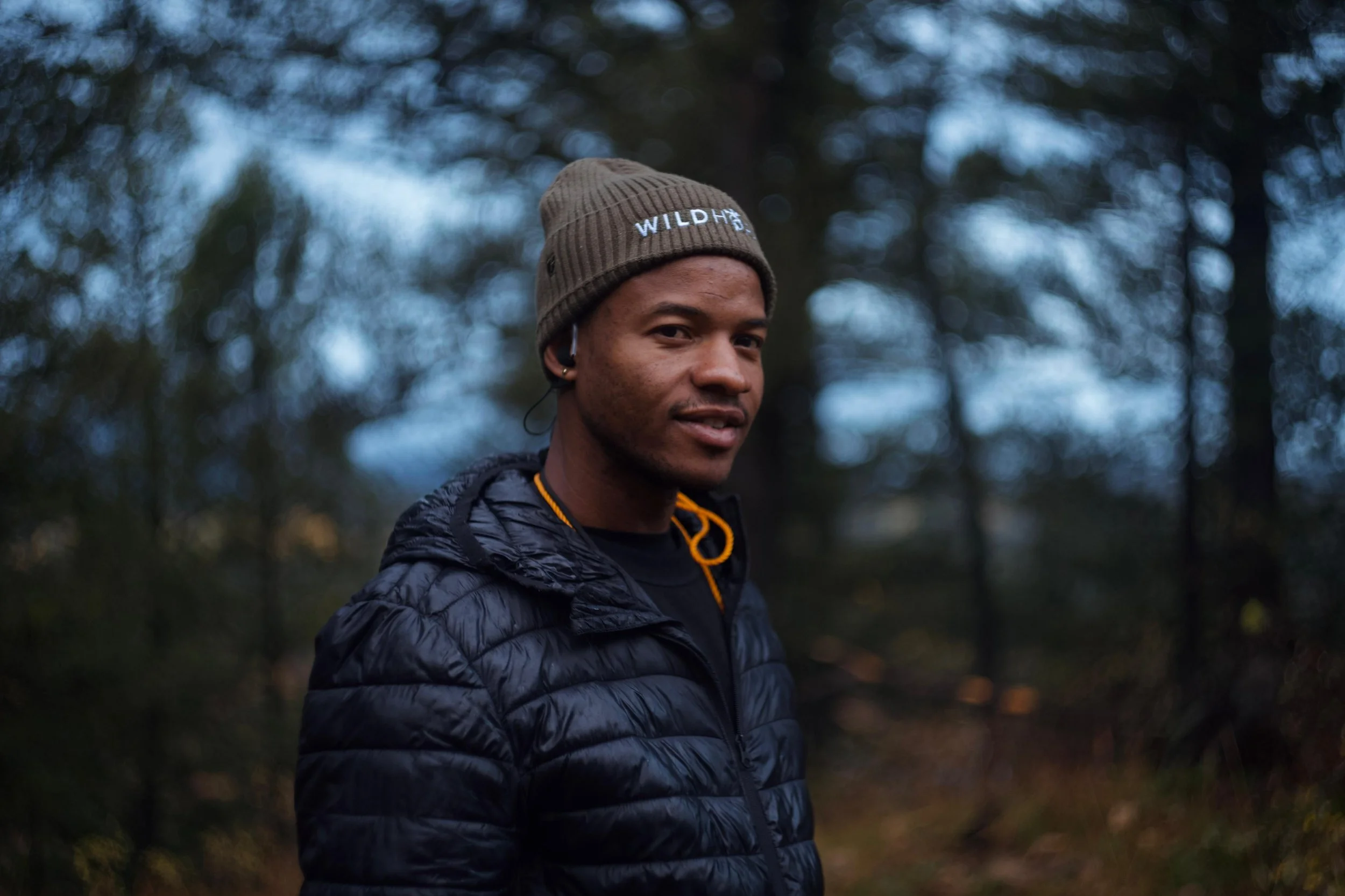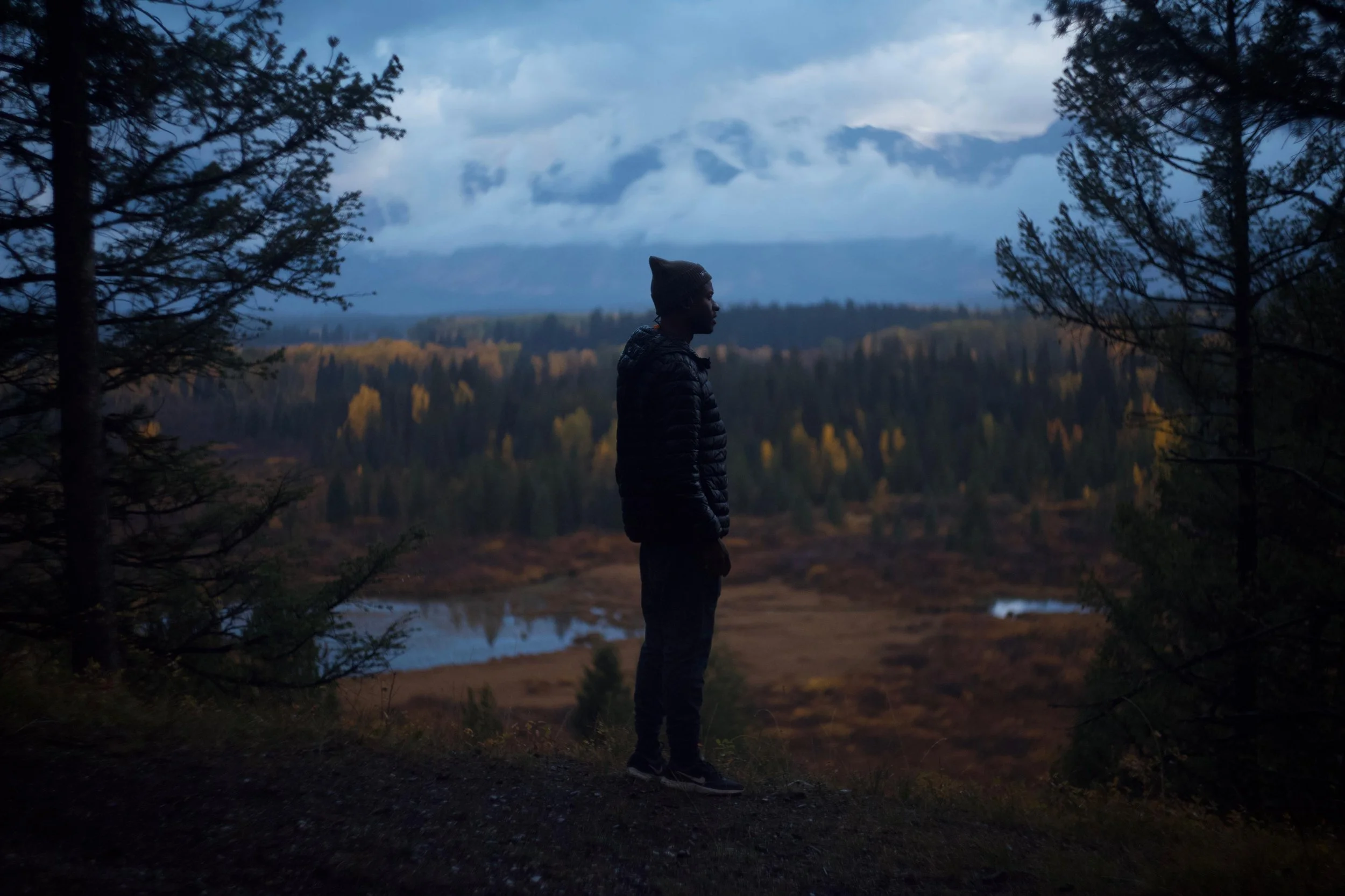Rooted in Sound, Salt and Soil
Photograph by Andre Cruz.
From Maputo and the coral reefs of KwaZulu-Natal to Gorongosa and beyond, Dercio Muha Gomate carries stories in rhythms that transcend song. Rooted in ancestry yet open to new mediums, his artistry bridges ancient tradition and modern exploration – with the ocean and the strum of the Mbira pulsing through his work in poetic synchronicity. Calm, grounded, and ever-curious, Muha translates lived experiences into art.
Photograph and RAW Soundbite by Stefanie Titus
Introduced to this community as one of the talents recruited from across Africa for the first and so far only Compose Yourself lab funded through the Africa Refocused programme, he has continued to bring his penchant for storytelling into the exploration of new mediums.
Walking into a room, Muha exudes a calm that one seldom meets – it’s not just the relaxed posture of a young artist confident in his skin – it runs deeper and brings with it a grounded, weighty comfort that hints at deep thoughts and even deeper roots. When I recorded our conversation on a comfy couch in an airy Airbnb in Newlands at the end of 2023, he answered my questions and told his stories in his signature, soft, sing-song voice; his words trickling rhythmically like a curious bedtime story — one of a great and humble adventure.
Beyond finding inspiration in everything he encounters in his daily, TiKwenda (as this collective of African composers and friends are now known) cracked open a vivid world of story for Muha, who has since deepened his love for the ocean by learning to dive off the warm, coral-encrusted coast of KwaZulu-Natal.
Michael Ezomoh (Nigeria), Labdi Ommes (Kenya), Marcia Buwa (South Africa), Dercio Muha Gomate (Mozambique) and Neil Darmon (Morocco).
“Every new place I go and every new activity I get involved in, my ear is inspired by different sounds and textures. There’s something about the ocean and the Mbira.
The Mbira has a very percussive quality, it has this rhythm. The ocean too has that rhythm – the tides coming in and out… and the waves. It’s not similar in a linear way, it’s a spiritual, metaphysical connection.
Every time I play the Mbira people tell me it reminds them of the ocean and the waves because in their bodies they connect with that.”
Sharing how immersing himself in this briny, alien world gave him context for those connections; listening to him speak about navigating new camera equipment while participating in an underwater photography lab sounds poetic - an undeniable nod to his natural gift for storytelling, and a sensible next step after exhibiting his first underwater series at the opening of eKhaya Storytelling, Research and Dive Centre in November 2023.
“Eish, it’s been life-changing to say the least. I’m letting that reflect in my work, I’m translating experiences.”
Before returning to South Africa to participate in more labs and exploring collaborative potential, he carried the inspiration he found along the protected coral reefs of Sodwana Bay – part of iSimangaliso’s pristine world heritage sites – home.
Intentional about learning what he could about the natural ease he found in the ocean, both on the surface and deep below, his first exploration took him to Machangulo Peninsula, about 40 minutes by boat off the coast of Mozambique, where some of his family are from.
What began as a family connection became serendipitous when he and a friend found themselves unexpectedly stranded on the island. His Instagram stories from that time in 2024 revealed the joy – snippets of scooter rides along winding forest paths, and moments of kindness from locals that left him feeling he had been given an opportunity to remain in the moment. A few months later, he photographed a pod of dolphins for a local project - demonstrating the development of his underwater cinematrography acumen.
As with many young artists, pursuing music was not a path chosen by his family. So, when I asked him about TiKwenda’s 2023 Jackson Wild Award - a collaborative win with local Botswana talent Thato Kavonja and Mikael Rosen, and one that won in the same category Hans Zimmer competes in – he shot me a huge smile.
“It was a mix of emotions. Growing up going into music – I had to fight a current, a social current coming from my family, coming from my friends, coming from people who didn’t think this was a safe path to take particularly for an African. I had to listen to my inner voice and take my own path. This acknowledgement and appreciation, winning an award on a platform like Jackson Wild, validated that I was doing the right thing and doing what I was meant to do.
I don’t usually remember my dreams, but I remember that all of us were on stage winning an award. I immediately sent a message to our group telling them, ‘I don’t know what award, but we’re going to win an award. I’m just putting it out here.’ And it happened!”
Marcia Buwa and Thato Kavinja accepting the 2023 Jackson Wild Media Award for Original Music Score for Nkashi - Race for the Okovango.
In his element, photograph by Dilayla Romeo.
As a collective scattered across the continent, TiKwenda has stayed connected virtually, sometimes collaborating under their solo labels too. 2023 was a big year for Muha, who turned 30 then, but it also marked the longest period they had not gathered as a collective.
“We’d been apart for a year and what’s so beautiful is that every time we meet as our larger collective, we meet different versions of each other. So much happens in all of our lives. Neil was doing amazing work in Paris, Marcia was producing so much music. Labdi was everywhere – we even produced a song together. She’s iconic, so diligent!
And I have a surprise of my own – I applied for a National Geographic Society grant… and I got it!”
That grant - now underway in 2025 - is no small feat. The success rate for storytelling grants across the globe is slim - so much so that the society has since changed to a request for proposal application system to reduce the level of discouragement caused by high volumes of applications from all around the globe. His project is giving him a platform to venture into new unexplored local terrain and mediums, and strengthen new audio and storytelling muscles.
“I originally imagined Gorongosa National Park as a trillion-piece orchestra – composed of unique biodiversity found nowhere else on the planet… Restlessly buzzing, howling and chirping as a divine symphony.
Through my acoustic soundscape project I hope to highlight and amplify those sounds, in a musical and engaging way.”
Since becoming an explorer he has had so much support and guidance that his project has taken a new direction: capturing the seasonal audioscapes of key selected biodiversity areas in the park he longed to spend time in for so long, to experience and share the sound of Gorongosa’s biodiversity from season to season.
With the generous time and expertise of Dr.Piotr Naskrecki as the scientific advisor for his project, the fit couldn’t be more sound - yes, pun intended. A nature photographer and writer, Piotr’s work spans projects that promote Gorongosa’s biological riches to the world - passionate work that aligns with Muha’s goal of sharing nature's wander with locals and global audiences once his research is complete.
Since starting his field work and immersing in the sounds alongside Dr.Piotr he has found a clearer direction for his project, with immersive natural rhythm and indigenous pride remaining at its heart.
“Sound has always been the backdrop to our very existence on this planet, and water has always been the nurturer and birth giver of life. As we become more globalised, we are shifting further and further away from the habitats and sounds that inspired, taught and protected our ancestors.
In my NGS-funded grant project I’m tuning in to two habitats in one of Africa’s most diverse ecosystems, right at the southern tip of Africa’s Great Rift Valley, to listen to how the soundscape is orchestrated by water as the rainy season comes and goes.
In two distinct locations in the park, one a sand forest pan fully dependent on rainfall, and another at the Lion House where a river flows year-round, the landscape drastically changes from dry savannah to flooded wetlands.
Alongside the powerful calls of the large animals, I’m focusing on the tiny creatures we rarely see but who quietly keep these ecosystems in balance: bats, cicadas, insects, and the hidden aquatic life beneath the water’s surface.
Through recordings from different perspectives such as ultrasonic, hydrophone and stereo, I want to weave an auditory journey to re-inspire us to listen to nature as we always did.”
Travelling with his Mbira always tucked nearby, Muha is redefining what it means to be a musician; nodding to the heart of African storytelling: layers of depth that transform documenting story into art. Technically, his sound companions have grown to include a Zoom F3 attached to different types of microphones.
“I have stereo recordings that cover the human hearing spectrum.
And with these devices I’m also attaching ultrasonic microphones to capture bat eco-location; and capturing sounds in the water systems in the Pan in the Sand Forest and the river at Lion House.”
And of course his trusty ARCGIS Survey123 app for capturing data points and notes during fieldwork for this project and other projects in the pipeline.
“The primary delivery of my project will be an ArcGIS mapping experience, which includes photographs. I am also creating a sound collage, compressing the sounds [spanning my project] into a one hour auditory experience.”
So considering the enormous amount of audio captured in these quite yet intensive field trips spanning a year, it is reasonable to imagine the labour required to process data of this volume and nuance.
Thankfully, a timely collaboration with students from the University of California, San Diego (UCSD) who are pioneering an AI tool, has meant that these projects are primed to complement one another. For the students it offers the opportunity of real-world testing complete with the full intensity of delivery timelines and it’s offering its existing functionality as a productive and meaningful tool to assist Muha in maintaining the momentum of his project.
“At the half way mark of my project I collected around 480 hours of audio —this is around 20 full days of sound captured.
It would take me months to go over all of this data manually, as I was doing before.
With the team we built a system that helps me analyse the sounds at light speed, using a list of linked sounds and unsupervised data analysis.
This has reduced my post-production hours to a factor of a third.”
While travelling in Mozambique for work and a magical smidge of play, I also had the opportunity to catch up with Muha to update and finish this story. Our adventures in Maputo made possible by his trusty preowned 4x4; an investment he is so happy to have made to continue his project, and to experience his region and country anew.
Updating me on his project from the drivers seat, we reflect back on how all of this started and how different areas of his work give him new imaginaries to explore; ones with labels that exceed the titles he is most known for the in the #NEWFcommunity: Musician, Composer - even DJ.
Though his journey was met with a powerful entry into the community as part of TiKwenda; travelling to Botswana to score for Nkashi: Race for the Okavango, performing the collective live natural history and animation film composition to an audience stunned to tears and goosebumps at the Barnyard during the 2022 NEWF Congress. Taking it off-continent they performed live at the National Geographic Society’s Storytellers Summit, and then took home a Jackson Wild award. Yet now, in retrospect, it all represented just one beginning — a burst of energy that would reshape most of the cohorts lives.
He has since remained immersed in a rhythmic dance of opportunity that found him ready. Discovering his love and new questions about the sounds of the underwater world, embracing the freedom and physiological magic of freediving in training with Argonaut Science as part of a 2024 NEWF Freediving cohort, leaping subaqua to dive and capture dolphins in Mozambique (his first hire in a wet lens role), facilitating knowledge exchange related to music and film composition alongside Labdi Ommes at the 2024 Kilele Summit, and (phew) deepening his work using ArcGIS tools under the mentorship of Information Technologist Adam Jenkins who (along with Vero Coutee) hosted an incredible Story Mapping workshop at the 2024 edition of the NEWF Fellows Summit and Congress.
In conversation about my own work, facilitating storytelling training for marine scientists at a collaborative training hosted at a Eduardo Mondlane University (EMU); I explain how powerful showing a sample of his storymaps is to scientists who still view science and the art of storytelling as disciplines so entirely separate that it limits impact. Mapping tools like ArcGIS and the use of storymap formats brings to life what charts and data can’t — an interconnected understanding of how together art and data is able define every one of our stories; moving audiences in unexpected ways.
Building on the same awe, the incredible reactions and moving sweep of emotions through the room when showing NEWF films is a refreshed source of perspective as he shares that O mar para Analine (Sea to Analine) was nominated in the Global Voices category of the 2025 Jackson Wild Media Awards.
“Grateful to have represented Africa alongside the NEWF Community at the 2025 Jackson Wild Media Awards. It was an honour to take part in a panel with incredible composers from around the world and to perform at the awards gala on the final night.
Although our film - O mar para Analine (Sea to Analine) - didn’t take the award home, being a finalist and having our work recognised by this community was so meaningful.
Moments like these remind me of the power of collaboration and the importance of sharing stories that connect us to the natural world.”
Wide-eyed with excitement and still in the passenger seat with forgotten sun-warm Doshem and trinkets rattling on the backseat, my excitement turns to a wave of emotions as he shows me the first film he has directed, Salty Skin. Having immersed in the NEWF community both as a fellow and team member filtering through enormous amounts of information that include a vast catalogue of films - if I’d been shown this, alone in the room with no credits - I’d have known with 99% certainty exactly whose film it was.
Interrogating this touching, deeply resonant film, I rewatched it about 6 times as the signal buffered, sometimes simply going back to ask about every beautiful choice made that stood out and captured my heart. Salty Skin, tells one very particular and well crafted story about a friendship formed by and in the sea. But it also told the story of how - just like Naima and Nombuso - I found the most special friendship in a sea close to home, with a person raised on a different coast who I would not have met otherwise.
Because we tell humble stories right where we are - they are more likely to travel far and resonate with wider audiences than the still highly prevalent format conforming culture. This is what separates those who can operate a camera from the brush strokes and stylistic signatures that make an artist.
When we think of the emerging talent in storytelling today, we must think of what it means for the future of film and the arts as a growing catalyst for change. Words by Djibril Diop Mambéty - the late and great Senegalese film director, actor, and activist - comes to mind.
Archive still frame from Hyena’s (1992).
“I…wanted to pay homage to the beauty of Africa when I made the film (Hyènes). For me, part of that beauty is the fact that it is not very difficult to make a film in Africa. I have a great desire to demystify cinema–especially the financial aspect of cinema. Africa is rich in cinema, in images. Hollywood could not have made this film, no matter how much money they spent. The future belongs to images. Making a film is a matter of love, not money.”
Djibril made a handful of gorgeous, critically acclaimed films without formal filmmaking training, and through honouring his ancestral gift for storytelling, he defined his creative signatures and declared his agency in African cinema, featuring music that sounded like the stories he told. Once an emerging talent himself, his energetic soundtracks and embrace of African stories remain decades after his passing; leaving another powerful quote I share with Muha, “African Filmmakers can be birds for reinventing the seventh art.” His quote refers to a 1911 concept by Ricciotto Canudo where he describes cinema as the seventh art form, following architecture, sculpture, painting, music, poetry, and dance.
From musician, soundie and composer, to National Geographic Explorer, artistic science communicator, mentor, shooting director, post-production artist and legal driver of his own adventure wagon, Muha is committed to a life of purpose through his art. Growing as he continues navigating the discomfort of newness, his talent feels like it has only just begun exploding into a unique garden of pearls, shinier and larger as the friction of newness grows.
And still, it’s just the beginning, as he works on these notable projects, he continues planning which seeds next to sow in Mozambique, including visits with his former school to talk about his journey and inspire the next generation of Mozambique youth to press through the discomfort and thrill of newness too.
Photograph by Manu Akatsa
“I envision soaring through the ether where all ideas come from. Unconstrained, in perfect unison, painting a collective story in the skies. It reminds me of us - what we are collectively doing in the community.”
In leaning into our rich plurality individually, collaboratively and collectively, we transcend the seventh art and become what we have always deserved: contemporary historians leaving a legacy of custodianship on our own terms.


